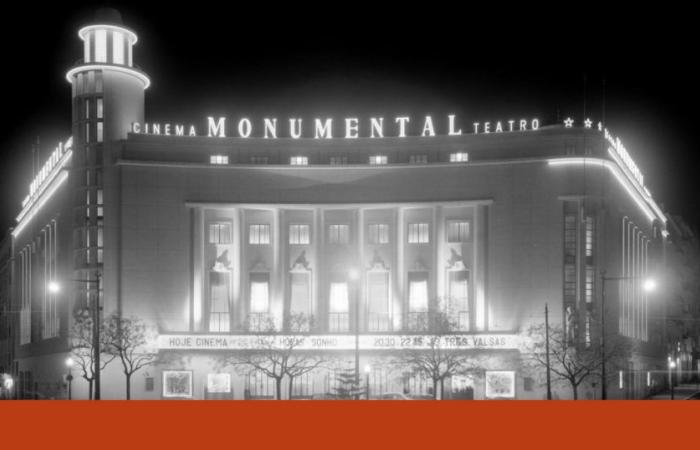During the 20th century, numerous cinemas were created in the center and surroundings of Lisbon. But not all have stood the test of time. Some were demolished along with the buildings that served as their homes, others were dismantled and their spaces reconverted. Currently, only a portion of those that existed until the end of the 20th century remain in activity. The photographs from the Calouste Gulbenkian Foundation archive of the capital’s old cinemas, which were recently compiled and published in an article on the Foundation’s own website, allow a rare glimpse into the interior of the spaces that time has erased and that photography has preserved.
There are those who still remember the imposing Cine-teatro Monumental, in Praça de Duque de Saldanha, which operated between 1951 and 1984. The four-story building, originally designed by the architect Rodrigues de Lima (1909-1979), had characteristics that linked it, aesthetically, to the period of the Estado Novo, and exhibited traces of Portuguese modernism at the time. Its rooms each housed more than a thousand spectators: the cinema room had almost two thousand seats and the theater room had just over a thousand. Its demolition, in 1984, gave way to a new construction with the same name, which housed a shopping center, Banco BPI offices and four cinemas.
Considered one of the most important works of modernist architecture in Portugal, the Éden cinema theater was born in 1938, in Praça dos Restauradores, in the center of Lisbon. It had a characteristic that made it controversial at the time, which was its “blind facade”, without windows. The cinema room had a capacity of 1554 seats. The interior of the building was demolished in the early 1990s, but the facade was retained. The new construction gave way to a hotel.
The Lys cinema, with seating for 630 spectators, opened on December 11, 1930, on Avenida Almirante Reis. On April 10, 1973, it closed for renovations and opened under the name Roxy, on June 26 of the same year, with 531 seats. It is currently a commercial building, where a shoe store once operated, which stands out from the rest due to its striking vaulted façade that clashes with the Avenue.
The first building that housed Cinema Europa had capacity for 616 spectators and opened in 1931, on Rua Francisco Metrass, in the Campo de Ourique area, in Lisbon. The work designed by Raúl Martins, which merged elements of art deco and modernist style, it was demolished in 1957 and, the following year, gave way to the building that remains standing today, transformed into housing, library, play library and auditorium, Library/Cinema Europa Cultural Space.
The Alvalade cinema, at Avenida de Roma number 100, was created in 1953, in the heart of the Alvalade neighborhood, with a capacity for almost 1500 spectators. In 1985, the cinema stopped operating and the building was leased to the UCKG. Years later, in 2003, the building was demolished and in its place the City Classic Alvalade building was created, where films are still shown in the four cinemas that were secured. The mural by Estrela Faria remains preserved, next to the entrance.
In Largo de Santos, in Lisbon, the Cinearte cinema, designed by the architect Raúl Rodrigues Lima (1909-1979), opened in 1949. Inside the building with modernist lines, the cinema operated until 1981 and is, today, a Property of Interest Public. In 1990, nine years after the closure and already in the possession of the Lisbon City Council, the space was transferred to the theater company A Barraca, which maintains operations there.
Tags: journey golden era Lisbons extinct cinemas Photogallery
--





